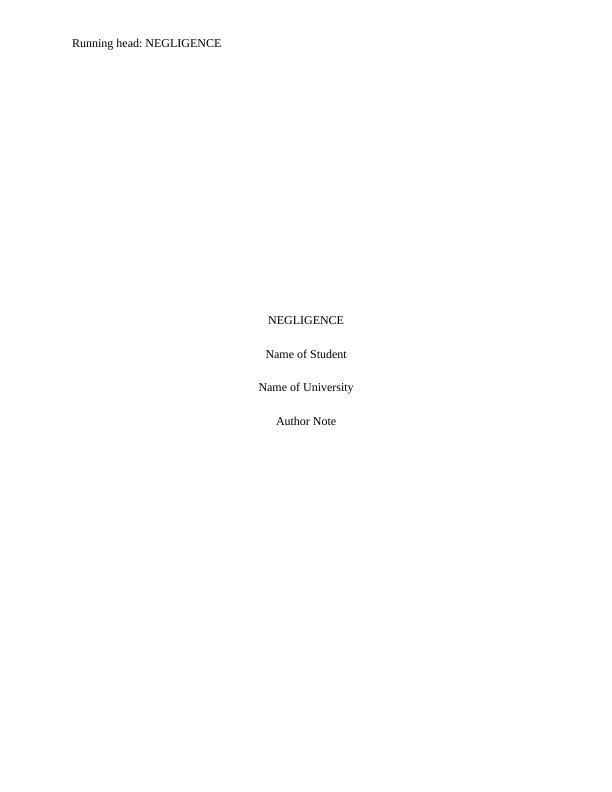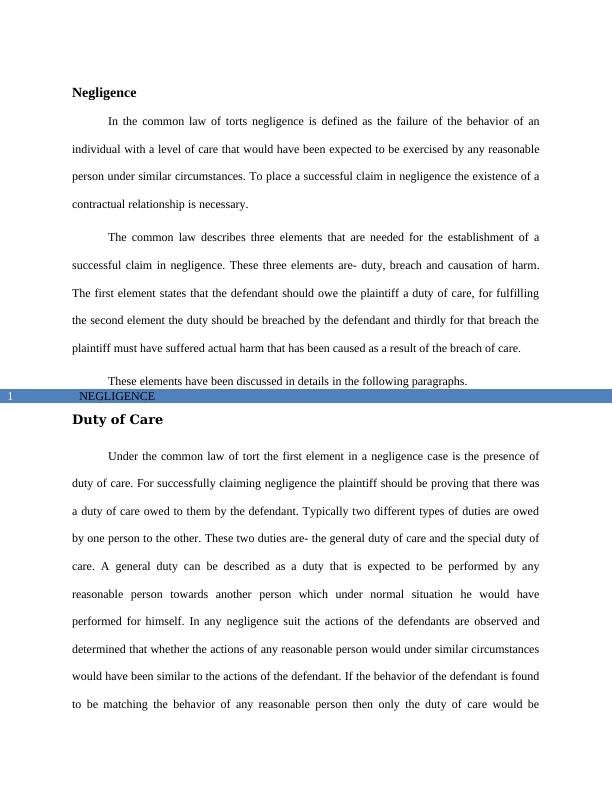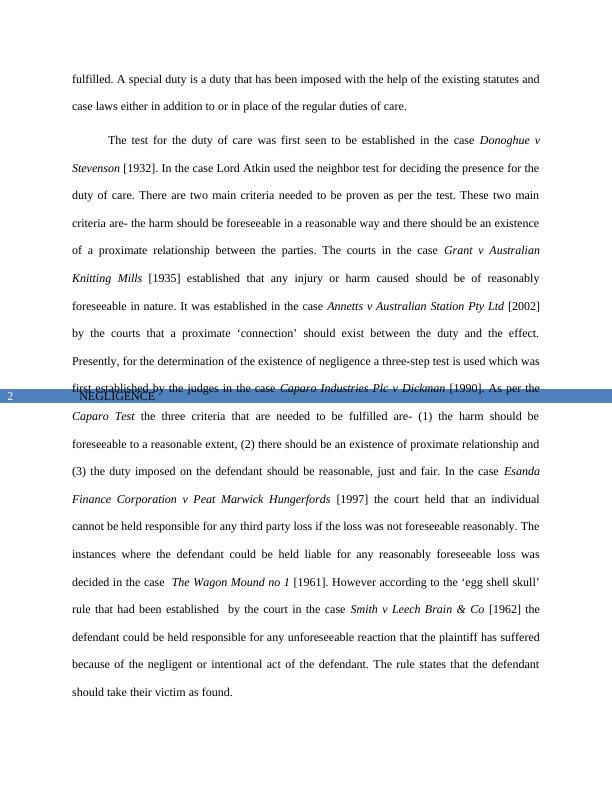Negligence in Common Law of Torts
Assignment 1 for the Introduction to Business Law course, requiring a written mini-research essay on a given topic.
7 Pages1727 Words65 Views
Added on 2023-01-03
About This Document
This document discusses negligence in the common law of torts, including the elements of duty, breach, and causation of harm. It also explores the principles of negligence important for an accountant and provides insights into relevant cases and legal standards.
Negligence in Common Law of Torts
Assignment 1 for the Introduction to Business Law course, requiring a written mini-research essay on a given topic.
Added on 2023-01-03
ShareRelated Documents
End of preview
Want to access all the pages? Upload your documents or become a member.
Elements of Negligence Case Study 2022
|8
|2027
|30
Principle of Negligence | Tort Law Assignment
|8
|1998
|311
Law Assignment: Tort of Negligence
|9
|1722
|538
Negligence and Professional Negligence Annotated Bibilography 2022
|9
|2112
|22
Assignment on Law Negligence
|13
|3690
|372
Tort Law: Duty of Care and Negligence
|9
|1989
|98



